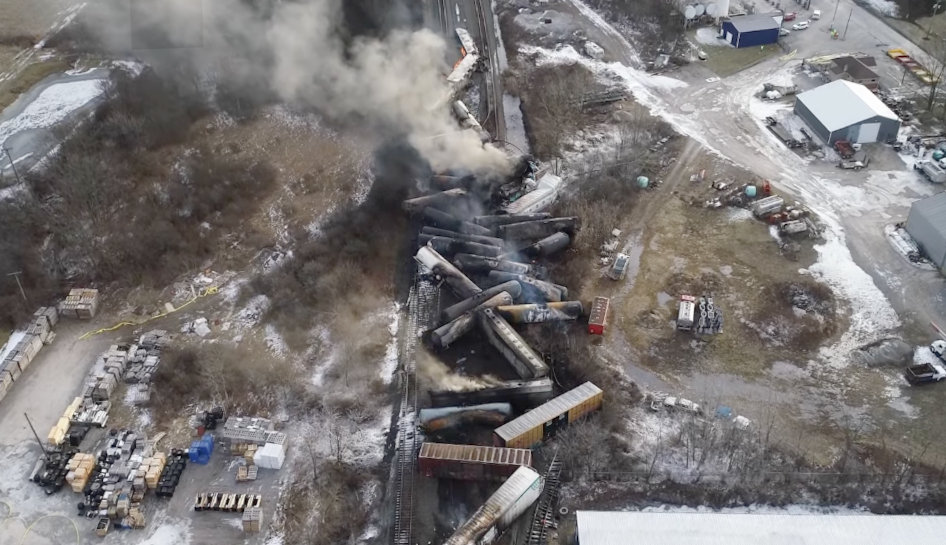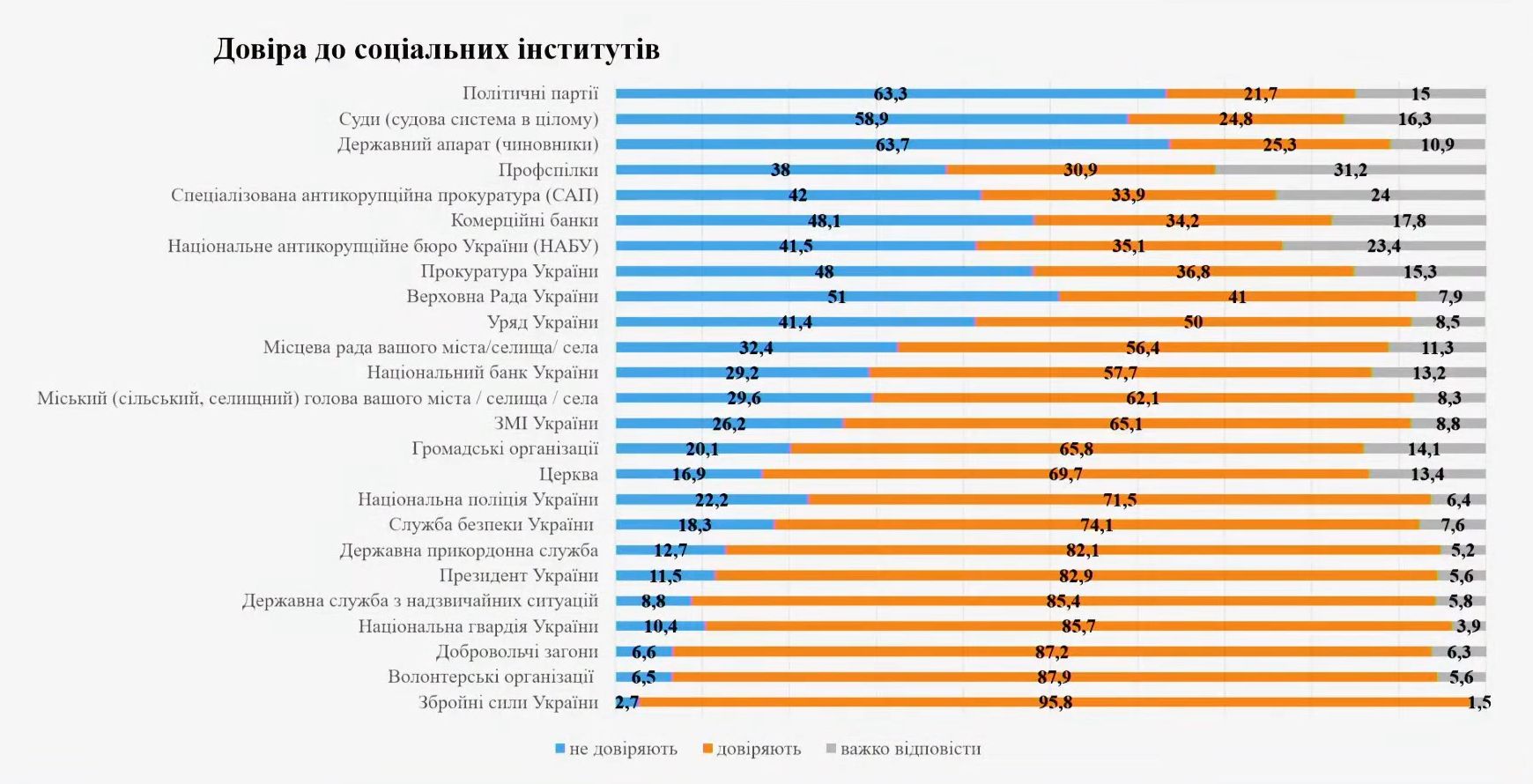East Palestine's Lingering Threat: Toxic Chemicals In Buildings After Train Derailment

Table of Contents
The Invisible Threat: Contamination Pathways in East Palestine Buildings
The volatile nature of chemicals released in the East Palestine derailment, particularly vinyl chloride, means contamination pathways are diverse and potentially pervasive. These chemicals could have infiltrated buildings through several routes:
-
Air Infiltration: Vinyl chloride and other volatile organic compounds (VOCs) readily penetrate porous building materials like wood, drywall, and insulation. Air currents can carry these chemicals into homes and businesses, leading to indoor air pollution. The concentration of these chemicals within the building's interior may vary significantly dependent upon the building's age, materials, and proximity to the derailment site.
-
Surface Contamination: Chemicals may have settled on exterior surfaces of buildings, including siding, windows, and roofs. Over time, these chemicals can leach into building materials, potentially leading to long-term contamination. Rainwater runoff could also carry contaminants into the building's foundation. This surface contamination presents a particularly challenging aspect of the cleanup, as it requires meticulous identification and remediation procedures.
-
Groundwater Contamination: The derailment's impact on groundwater poses a significant threat. Contaminated groundwater could seep into basements and foundations, affecting building structures and potentially leading to indoor air contamination through vapor intrusion. The porous nature of certain soils can exacerbate the spread of these contaminants into the broader environment. Independent testing is crucial to determine the severity and extent of this specific risk.
Experts warn that the full extent of building contamination in East Palestine remains unknown. Further investigation and comprehensive testing are urgently needed to assess the risk accurately and inform effective remediation strategies. The use of advanced environmental testing methodologies, incorporating both air and material sampling techniques, will be critical in determining the full scope of the problem.
Health Impacts of Long-Term Exposure to East Palestine Toxins
Exposure to the chemicals released in East Palestine carries significant long-term health risks. The potential consequences extend beyond the immediate symptoms reported in the aftermath:
-
Respiratory Problems: Vinyl chloride is a known respiratory irritant, capable of causing bronchitis, emphysema, and other lung diseases. Long-term exposure can lead to chronic respiratory issues.
-
Cancer Risks: Many of the released chemicals are classified as carcinogens. Exposure to these substances, even at low levels, increases the risk of developing various cancers, including liver cancer, leukemia, and lymphoma. The long latency period associated with many cancers adds further urgency to monitoring the health of the affected population.
-
Reproductive Health Concerns: Some of the chemicals released pose a significant threat to reproductive health. Exposure during pregnancy may harm fetal development and increase the risk of birth defects. Studies are urgently needed to properly assess the reproductive health impacts within the affected community.
The Centers for Disease Control and Prevention (CDC) and other health organizations are actively monitoring the health of residents. However, long-term health studies are necessary to fully understand the lasting consequences of exposure to the East Palestine toxic chemicals. Access to comprehensive medical care, including regular screenings and appropriate treatment, is crucial for affected individuals.
The Challenges of Remediation and Testing in East Palestine
Remediating the contamination in East Palestine presents a significant challenge:
-
Identifying the Extent of the Contamination: Pinpointing all affected buildings requires extensive testing and investigation. This process is complex and time-consuming, requiring the use of specialized equipment and expertise.
-
Testing Methodologies: Accurately testing for various chemicals in diverse building materials necessitates advanced methodologies and experienced personnel. The complexity of the chemical mixture and the varied nature of building materials make this a significant hurdle.
-
Cost and Logistical Challenges: The cost of a large-scale cleanup, encompassing building remediation, testing, and potentially relocation, is substantial. The logistical challenges of coordinating testing, cleanup efforts, and support for residents also present a major barrier.
Government agencies and private companies are involved in the cleanup efforts. However, increased funding, improved coordination, and transparency are essential to guarantee an effective and comprehensive response. The involvement and collaboration between various levels of government and independent scientific researchers are crucial to a well-coordinated effort.
The Need for Transparency and Public Access to Information
Transparency is paramount in the East Palestine situation. Authorities must openly communicate the extent of contamination, ongoing remediation efforts, and the associated health risks. Residents have a right to access accurate, timely, and easily understandable information about their health and safety. This includes easy access to detailed reports on testing results, remediation strategies, and long-term health monitoring plans. Open communication fosters community engagement and trust, which is critical for a successful and equitable response to this environmental tragedy.
Conclusion
The East Palestine toxic chemicals present a serious and long-lasting threat. The contamination of buildings poses a significant risk to public health, with potential long-term consequences for respiratory health, cancer risk, and reproductive health. The challenges of comprehensive testing, remediation, and ensuring access to healthcare are substantial. Addressing the crisis demands a concerted effort involving comprehensive testing, transparent communication, and thorough remediation strategies. It is crucial to hold responsible parties accountable and to support the affected residents through this ongoing public health crisis. Stay informed, support affected communities, and demand accountability—the long-term health and well-being of East Palestine residents depend on it. For more information and resources, please refer to [link to relevant resources, e.g., CDC, EPA websites].

Featured Posts
-
 Chantal Ladesou Tacle A Nouveau Ines Reg Une Bagarreuse Qui Aime Le Conflit
May 11, 2025
Chantal Ladesou Tacle A Nouveau Ines Reg Une Bagarreuse Qui Aime Le Conflit
May 11, 2025 -
 Spor Dzhonsona I Trampa Realniy Reyting Zelenskogo I Zayavleniya Politikov
May 11, 2025
Spor Dzhonsona I Trampa Realniy Reyting Zelenskogo I Zayavleniya Politikov
May 11, 2025 -
 Blue Origin Cancels Launch Details On The Subsystem Failure
May 11, 2025
Blue Origin Cancels Launch Details On The Subsystem Failure
May 11, 2025 -
 Bundesliga Champions Bayerns Home Win And Muellers Send Off
May 11, 2025
Bundesliga Champions Bayerns Home Win And Muellers Send Off
May 11, 2025 -
 Facing Tik Tok Instagram Ceo On Growth Or Decline
May 11, 2025
Facing Tik Tok Instagram Ceo On Growth Or Decline
May 11, 2025
